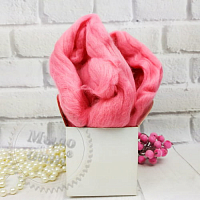-
 DIY: Video master classes
DIY: Video master classes
-
 Aromatherapy
Aromatherapy
-
 Felting master classes
Felting master classes
-
 Eating at home
Eating at home
-
 DIY cosmetics for children
DIY cosmetics for children
-
 Cooking recipes
Cooking recipes
-
 Detergents, cleaning products with your own hands
Detergents, cleaning products with your own hands
-
 Soap making as a business
Soap making as a business
-
 Natural cosmetics. Raw materials for cosmetics and soap.
Natural cosmetics. Raw materials for cosmetics and soap.
-
 Natural oils in cosmetics
Natural oils in cosmetics
-
 News
News
-
 Recipes for balms and conditioners
Recipes for balms and conditioners
-
 Bath Bomb Recipes
Bath Bomb Recipes
-
 Cream recipes. Cream making.
Cream recipes. Cream making.
-
 Lotion recipes. Gel recipes.
Lotion recipes. Gel recipes.
-
 Mask recipes
Mask recipes
-
 Soap recipes. Base soap. Soap from scratch.
Soap recipes. Base soap. Soap from scratch.
-
 Recipes for all occasions
Recipes for all occasions
-
 Natural shampoo recipes
Natural shampoo recipes
-
 Healthy Nutrition Recipes
Healthy Nutrition Recipes
-
 Scrub recipes. Massage tiles. Ubtan
Scrub recipes. Massage tiles. Ubtan
-
 DIY candles
DIY candles
-
 Reference materials, questions, tips
Reference materials, questions, tips
-
 Startup - soap production
Startup - soap production
-
 Hair care. Tips, recipes
Hair care. Tips, recipes
-
 Facial skin care. Cleansers.
Facial skin care. Cleansers.
-
 Body care. Tips, recipes
Body care. Tips, recipes
-
 Photo Reviews
Photo Reviews
-
 Chocolate Handmade
Chocolate Handmade
FACE SERUM WITH LIFTING EFFECT: INSTANT LIFTING AND ACTIVE CARE
 In the pursuit of youthful and radiant skin, face serums have become indispensable. While the market is flooded with industrial options promising instant lifting and active care, crafting your own DIY serum offers unparalleled control over ingredients, ensuring freshness and potency without the often-present synthetic additives, preservatives, and hefty price tags. This article delves into the art of creating three unique face serums designed to provide both an immediate tightening effect and long-term skin benefits. We will explore the nuances of preparation, the remarkable properties of the chosen natural ingredients, and the distinct advantages of homemade serums over their commercially produced counterparts.
In the pursuit of youthful and radiant skin, face serums have become indispensable. While the market is flooded with industrial options promising instant lifting and active care, crafting your own DIY serum offers unparalleled control over ingredients, ensuring freshness and potency without the often-present synthetic additives, preservatives, and hefty price tags. This article delves into the art of creating three unique face serums designed to provide both an immediate tightening effect and long-term skin benefits. We will explore the nuances of preparation, the remarkable properties of the chosen natural ingredients, and the distinct advantages of homemade serums over their commercially produced counterparts.
The Power of Homemade: Advantages Over Industrial Serums
Choosing to create your own face serum goes beyond a simple DIY project. It's a conscious decision to prioritize your skin's health and well-being. Here's why homemade serums often stand out:
- Ingredient Transparency: You know exactly what goes into your serum. No hidden chemicals, artificial fragrances, or unnecessary fillers.
- Freshness and Potency: Homemade serums are made in small batches, ensuring the active ingredients are at their peak effectiveness. Industrial serums can sit on shelves for extended periods, potentially losing potency.
- Customization: You can tailor your serum to your specific skin type and concerns, adjusting ingredients and concentrations as needed.
- Cost-Effectiveness: High-quality natural ingredients, when purchased individually, can often be more economical in the long run compared to expensive branded serums.
- Reduced Exposure to Synthetics: Many industrial serums contain synthetic preservatives, fragrances, and colorants that can irritate sensitive skin. DIY serums allow you to avoid these potential irritants.
- Ethical and Sustainable: By choosing natural and often locally sourced ingredients, you can make a more environmentally conscious choice.
Understanding the Key Ingredients for Lifting and Active Care
Before diving into the recipes, let's explore some of the powerful natural ingredients known for their lifting and active care properties:
- Hyaluronic Acid (Low Molecular Weight): Penetrates deeper into the skin, attracting and retaining moisture, plumping fine lines, and improving elasticity.
- Aloe Vera Gel: Soothes, hydrates, and provides a mild tightening effect. Its anti-inflammatory properties are excellent for sensitive skin.
- Glycerin (Vegetable): A humectant that draws moisture to the skin, keeping it hydrated and supple.
- Witch Hazel Extract (Alcohol-Free): A natural astringent that can temporarily tighten pores and reduce inflammation. Ensure it's alcohol-free to avoid drying.
- Rosewater Hydrosol: Hydrates, tones, and has a mild lifting effect. Its calming properties are beneficial for all skin types.
- Green Tea Extract: A potent antioxidant that protects against free radical damage, reduces inflammation, and can contribute to skin firmness.
- Vitamin C (L-Ascorbic Acid or its stable derivatives like Sodium Ascorbyl Phosphate): Brightens the skin, boosts collagen production, and provides antioxidant protection. Choose the right form based on your skin sensitivity.
- Peptides (e.g., Matrixyl, Argireline): These amino acid fragments can stimulate collagen production, reduce the appearance of wrinkles, and provide a noticeable lifting effect over time.
- Essential Oils (e.g., Frankincense, Rose, Sandalwood): Offer various benefits, including promoting skin regeneration, reducing inflammation, and providing a pleasant aroma. Use with caution and dilute properly.
Recipe 1: The Hydrating and Instant Lifting Serum
Ingredients:
- 1 tablespoon Low Molecular Weight Hyaluronic Acid solution (1% concentration)
- 1 tablespoon Aloe Vera Gel (pure, 99% or higher)
- 1 teaspoon Vegetable Glycerin
- ½ teaspoon Witch Hazel Extract (alcohol-free)
- 5 drops Rosewater Hydrosol
- Optional: 2-3 drops Frankincense essential oil (diluted in a carrier oil like jojoba if not pre-diluted)
Preparation:
- Ensure all your tools and containers are clean and sanitized. You can do this by washing them with hot, soapy water and then wiping them with rubbing alcohol.
- In a small, clean bowl, gently combine the hyaluronic acid solution and aloe vera gel. Stir slowly to avoid creating too many bubbles.
- Add the vegetable glycerin and alcohol-free witch hazel extract to the mixture. Stir until well combined.
- If using, carefully add the rosewater hydrosol and diluted frankincense essential oil. Stir gently to incorporate.
- Transfer the serum to a clean, airtight, dark glass bottle with a dropper or pump. Dark glass helps protect the active ingredients from light degradation.
Recommendations for Use:
Apply a few drops of the serum to clean, slightly damp skin in the morning and evening before your moisturizer. Gently pat it into your face and neck until fully absorbed. Avoid direct contact with eyes.
Storage:
Store this serum in a cool, dark place or in the refrigerator to extend its shelf life. Due to the absence of strong preservatives, it's best used within 4-6 weeks.
Recipe 2: The Antioxidant and Firming Serum with Vitamin C
Ingredients:
- 1 tablespoon Rosewater Hydrosol
- ½ teaspoon L-Ascorbic Acid powder (ensure it's cosmetic grade and finely milled) Note: L-Ascorbic Acid can be unstable. Start with a lower concentration if you have sensitive skin. Alternatively, use a stable derivative like Sodium Ascorbyl Phosphate at a higher concentration (e.g., 1-2 teaspoons).
- ½ teaspoon Green Tea Extract (liquid form or freshly brewed and cooled strong tea, strained thoroughly)
- ¼ teaspoon Vegetable Glycerin
- Optional: A pinch of Ferulic Acid powder (helps stabilize Vitamin C and enhances its antioxidant properties)
Preparation:
- Sanitize all equipment and containers.
- In a clean bowl, combine the rosewater hydrosol and vegetable glycerin. Stir well.
- Gradually add the L-Ascorbic Acid powder (or Sodium Ascorbyl Phosphate) to the liquid, stirring continuously until it is completely dissolved. If using Ferulic Acid, dissolve it along with the Vitamin C.
- Carefully add the green tea extract and stir gently.
- Pour the serum into a clean, dark glass bottle with a dropper or pump.
Recommendations for Use:
Apply a few drops to clean, dry skin in the morning before your moisturizer and sunscreen. Avoid applying immediately after exfoliating with strong acids. Start with every other day if you have sensitive skin and gradually increase frequency. A slight tingling sensation is normal with L-Ascorbic Acid. Discontinue use if irritation occurs.
Storage:
This serum is best stored in the refrigerator to slow down oxidation, especially if using L-Ascorbic Acid. It should be used within 2-4 weeks as Vitamin C can degrade over time, even with proper storage.
Recipe 3: The Peptide-Rich Lifting and Regenerating Serum
Ingredients:
- 1 tablespoon Distilled Water or a mild floral hydrosol (e.g., Lavender)
- ½ teaspoon Matrixyl solution (typically sold as a pre-dissolved liquid)
- ½ teaspoon Argireline solution (typically sold as a pre-dissolved liquid)
- ¼ teaspoon Low Molecular Weight Hyaluronic Acid solution (1% concentration)
- ¼ teaspoon Allantoin powder (optional, for soothing and skin conditioning)
- 3 drops Sandalwood essential oil (diluted) or another skin-regenerating essential oil.

Preparation:
- Ensure all tools and containers are sanitized.
- In a clean bowl, combine the distilled water or floral hydrosol with the hyaluronic acid solution. Stir gently.
- Add the Matrixyl and Argireline solutions to the mixture and stir well.
- If using, dissolve the Allantoin powder in a small amount of warm distilled water separately and then add it to the serum. Ensure it's fully dissolved.
- Carefully add the diluted sandalwood essential oil and stir gently to combine.
- Transfer the serum to a clean, airtight, dark glass bottle with a dropper or pump.
Recommendations for Use:
Apply a few drops to clean, slightly damp skin in the morning and evening. Focus on areas prone to fine lines and wrinkles. Follow with your regular moisturizer.
Storage:
Store this serum in a cool, dark place or in the refrigerator. It should be used within 6-8 weeks.
General Recommendations for DIY Face Serums
- Patch Test: Always perform a patch test on a small area of your skin (e.g., inner forearm) before applying the serum to your entire face, especially if you have sensitive skin or are using a new ingredient. Wait 24-48 hours to check for any adverse reactions.
- Quality Ingredients: Use high-quality, cosmetic-grade ingredients for the best results and to minimize the risk of irritation.
- Sanitation is Key: Thoroughly clean and sanitize all your tools, containers, and work surfaces to prevent contamination and extend the shelf life of your serum.
- Observe Shelf Life: Homemade serums without strong preservatives have a shorter shelf life than industrial products. Pay attention to any changes in color, odor, or texture, which may indicate spoilage.
- Listen to Your Skin: Pay attention to how your skin reacts to the serum and adjust the ingredients or frequency of use as needed.
- Consistency is Crucial: For the best lifting and active care benefits, use your serum consistently as part of your daily skincare routine.
Conclusion: Embrace the Power of Homemade Skincare
Creating your own face serum with lifting effect and active care is a rewarding experience that empowers you to take control of your skincare. By understanding the properties of natural ingredients and following careful preparation guidelines, you can formulate potent and effective serums tailored to your unique needs. While industrial serums offer convenience, the transparency, freshness, and customization of DIY options provide a compelling alternative for those seeking genuine nourishment and visible results. Embrace the journey of homemade skincare and unlock the radiant potential of your skin.
Mylo Opt Cosmetics Blog – Your Reliable Guide to Beauty and Care
Welcome to the Mylo Opt cosmetics blog! Here, you will find valuable advice, interesting recipes, and professional recommendations for creating soap, cosmetics, and candles with your own hands. Our blog is designed for anyone passionate about natural cosmetics, looking for new ideas, and wanting to learn more about producing high-quality skincare and haircare products. We share tested recipes, useful tips, and the latest news from the world of cosmetics.
Why Choose the Mylo Opt Cosmetics Blog?
Mylo Opt is not just an online store; it is a community of people passionate about creating natural cosmetics. Here are a few reasons why our blog will be useful to you:
- Experience and Expertise: Our authors are experienced cosmetologists, soap makers, and aromatherapy specialists. We share reliable and tested recipes that have undergone thorough testing and received positive feedback.
- Credibility and Authority: We ensure that all information in our blog is up-to-date and reliable. We reference scientific research and verified sources so that you can trust the quality of the information provided.
- Reader-Focused: Our content is tailored to you – our readers. We strive to answer your questions, solve your problems, and inspire new achievements in the world of natural cosmetics.
Popular Products from the Mylo Opt Online Store
Before we move on to recipes and tips, let us introduce you to the most popular products from our online store, which will help you create high-quality and natural cosmetics:
- Soap Bases: High-quality soap bases allow you to create beautiful and beneficial handmade soaps. We offer glycerin bases, bases with added oils and extracts, as well as transparent and white bases.
- Fragrance Oils and Fragrances: Give your products a unique scent with our fragrance oils and fragrances. We offer a wide range of scents – from fresh and floral to spicy and woody.
- Essential Oils: Essential oils are natural components that not only add fragrance to products but also offer beneficial properties for the skin and hair. Our range includes lavender, mint, eucalyptus, lemon, and many other oils.
- Active Ingredients: Vitamins, antioxidants, hyaluronic acid, and other active ingredients help improve the properties of your cosmetics. We offer only tested and high-quality components.
- Pigments and Dyes: Give your products bright and lasting colors with our pigments and dyes. They are safe for the skin and suitable for use in soap, cosmetics, and candles.
- Emulsifiers and Thickeners: To create creams and lotions, you will need emulsifiers and thickeners. We offer quality ingredients that help you achieve the desired consistency and stability of the product.
- Soap and Candle Molds: Create unique items with our soap and candle molds. Our range includes molds of various sizes and designs.
- Everything for Candles: Wax, wicks, fragrances, and dyes for candles – we have everything you need to create beautiful and fragrant candles.
Recipes and Tips for Making Handmade Soap
Cold Process Soap for Beginners
Making cold process soap is an exciting process that allows you to control all the ingredients and create unique recipes. Here is one simple cold process soap recipe for beginners:
Ingredients:
- 500 g olive oil
- 300 g coconut oil
- 200 g palm oil
- 150 g castor oil
- 120 g lye (sodium hydroxide)
- 300 ml distilled water
- Essential oils (lavender, mint, eucalyptus)
- Pigments or natural dyes (optional)
Process:
- Prepare all ingredients and tools. Always use protective gloves and goggles, as lye can be dangerous.
- Weigh the lye and water. Slowly add the lye to the water, stirring until it fully dissolves. Allow the mixture to cool to 40-45°C.
- Weigh the oils and melt them in a water bath. When the oils and lye solution reach the same temperature (about 40-45°C), slowly pour the lye into the oils, stirring constantly.
- Use an immersion blender to mix until trace (when the mixture thickens and leaves a trail when stirred).
- Add essential oils and pigments if desired. Mix thoroughly.
- Pour the mixture into a prepared mold and cover with a towel. Let the soap harden for 24-48 hours.
- Remove the soap from the mold and cut it into bars. Allow the soap to cure for 4-6 weeks before use.
Homemade Cosmetics Recipes
DIY Moisturizing Cream
Creating a moisturizing cream at home allows you to control the ingredients and adapt the recipe to your needs. Here is a simple recipe for a moisturizing cream:
Ingredients:
- 50 ml rose water
- 50 ml distilled water
- 10 g emulsifier (e.g., Olivem 1000)
- 10 ml jojoba oil
- 5 ml avocado oil
- 5 drops lavender essential oil
- 2 drops tea tree essential oil
Process:
- Weigh all the ingredients.
- In a water bath, melt the emulsifier with the oils until smooth.
- Separately, heat the water phase (rose water and distilled water) to the same temperature as the oil phase.
- Slowly pour the water phase into the oil phase, stirring constantly.
- Use an immersion blender to emulsify until you achieve a creamy consistency.
- Add essential oils and mix thoroughly.
- Pour the cream into a sterilized jar and allow it to cool.
DIY Candle Recipes
Aromatic Soy Candle
Creating aromatic candles is a creative process that allows you to experiment with scents and designs. Here is a simple recipe for a soy candle:
Ingredients:
- 200 g soy wax
- 20 ml fragrance oil (e.g., vanilla or lavender)
- Wick for candles
- Dyes (optional)
- Glass or metal candle mold
Process:
- Melt the soy wax in a water bath until liquid.
- Add the fragrance oil and dyes if desired. Mix thoroughly.
- Secure the wick in the center of the candle mold.
- Slowly pour the melted wax into the mold, holding the wick.
- Allow the candle to fully harden (about 24 hours).
- Trim the wick to the desired length and enjoy your aromatic candle.
Tips for Beginners in Cream Making
- Learn the Basics: Before starting to create creams, it is important to learn the basic principles and ingredients used in cream making.
- Experiment with Formulas: Do not be afraid to experiment with different ingredients and proportions to find the perfect formula for your skin.
- Use Quality Ingredients: The effectiveness and safety of your product depend on the quality of the ingredients. Always choose tested and natural components.
- Maintain Hygiene: It is important to maintain cleanliness and sterility when creating cosmetics to avoid contamination and spoilage of the product.
- Start with Simple Recipes: For beginners, it is best to start with simple recipes to master the basic techniques and principles of cream making.
Conclusion
Our Mylo Opt cosmetics blog is your reliable source of information and inspiration in the world of natural cosmetics. We share useful tips, tested recipes, and the latest news to help you create quality and effective products for skin, hair, and home care. Subscribe to our blog, follow the updates, and discover new opportunities in the world of natural cosmetics with Mylo Opt!






